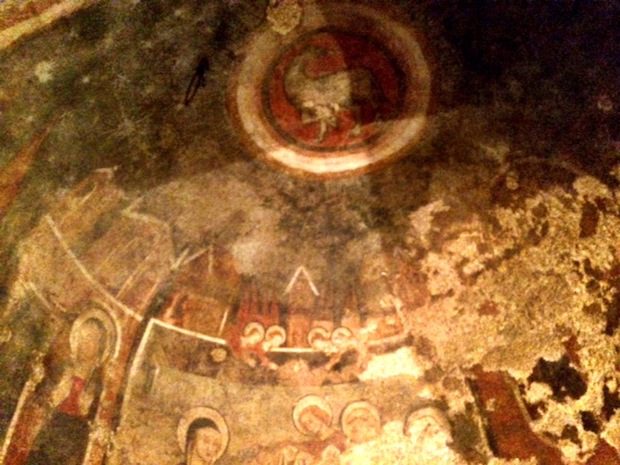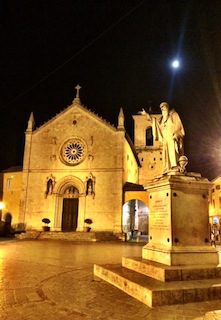Birthright for Christians

Have you ever heard of Birthright Israel? It’s an international organization whose objectives are as follows:
Taglit-Birthright Israel seeks to ensure the future of the Jewish people by strengthening Jewish identity, Jewish communities and connection with Israel via an educational trip to Israel for the majority of Jewish young adults from around the world.
We aim to foster participants’ understanding and identification with Israel, and through the “mifgash” program, strengthen the solidarity of Israeli young adults with their Jewish peers abroad and develop the Jewish identity of individuals in both groups.
Our hope is that our trips motivate young people to continue to explore their Jewish identity, support for Israel, and to maintain long-lasting connections with Israelis after their trip has ended. We encourage our alumni to take active roles in Jewish organizations and to participate in follow-up activities worldwide.
Since 1999, the year that the program began, over 400,000 young Jewish adults from around the world have accepted a free ten-day trip to Israel, to explore the roots of Judaism and Jewish culture in Israel. I have been to Israel myself, as a journalist and as an informal Christian pilgrim, and it affected me profoundly. I can easily imagine how much more it would mean to a diaspora Jew to have a ten-day experience in Israel.
A reader of this blog suggested in yesterday’s comments that Christians ought to come up with a similar program for our own youth. I think that’s a marvelous idea, though of course it would produce certain challenges, given the nature of Christianity, and, to be more specific, the nature of Christianities. I’d like us to spend this comments thread talking about them. I also invite Muslims, Hindus, Buddhists, and readers from other traditions to offer their ideas about what a Birthright trip for young adults from their faiths would involve.
Note well: I will not publish comments complaining about Birthright Israel, Zionism, Israeli geopolitics, etc. Those are legitimate issues to discuss, but we are not going to have that conversation here, because it will derail the purpose of the thread, which is to discuss creatively how the Birthright Israel experience could be adapted by people in other faiths.
For Christians, one big challenge is to determine where such an experience should take place. For Jews, there really is only one place to go: the Land of Israel. Obviously this would be a good place for American Christians to go too, for obvious reasons. It would do us all some good to meet and get to know the remaining indigenous Christians of the Holy Land. Besides, there’s really no substitute for praying on the Mount of Olives, for walking the Via Dolorosa, for standing on the shores of Lake Galilee, for making a pilgrimage to Bethlehem, and so forth.
But there are reasons why a Birthright Israel trip is much easier to pull off than a Birthright Christianity trip to Israel would be (and note too that it’s “Birthright Israel,” not “Birthright Judaism”; the Jewish organization is not so much trying to make more religious Jews out of these pilgrims, but build a sense of solidarity with the state of Israel). So, what alternatives would there be for Christians?
The reader who brought this up suggested the medieval pilgrim route to Santiago de Compostela, in extreme northwestern Spain. Since the ninth century, pilgrims from all over Europe have walked one of the various walking trails that converge on a single path across northern Spain, ending at the cathedral in which St. James — yes, that St. James — is buried. It’s a long walk, though you can start anywhere on the trail, making your experience anywhere from 10 to 30 days, generally. That’s a lot of walking! Pilgrims, most of them Catholics (though an Evangelical friend of mine recently made the trip), pray along the way, and talk about the faith. If they have a priest with them, they have mass. That seems to me like a good Birthright Christianity experience, and one that Protestant and Orthodox Christians can tailor to our own expressions of Christianity. Christian pilgrims were walking this route long before the Great Schism and the Reformation tore Christian unity apart.
Are there other possibilities? Certainly. For Catholics, a Rome-centric Birthright experience is a natural, though I would think the trip should not be entirely in Rome. Rome is overwhelming, and it’s easy to feel like a tourist there, and to find it difficult to hold fast to the spiritual core of the Birthright trip. I would think that a 10-day Birthright Catholicism experience would need to spend about a third of the trip in Assisi, a third of it in or around a monastery at which they can meet and pray with the monks, and the final third in Rome. The point is, there needs to be time for quiet, for reflection, for conversation.
Another Birthright Catholicism trip could involve doing the annual three-day walking pilgrimage from Paris to Chartres, during Pentecost. The 2015 pilgrimage just ended. A Birthright Catholicism trip could either begin with this pilgrimage, or end with it, but it should also involve monastic experiences. In Paris, a solemn visit to the Carmelite convent where over 150 priests, including bishops, were martyred for the faith during the Revolution is a must. Again, the purpose of the trip is pilgrimage, not sightseeing.
I am not well-traveled enough in other countries of Europe to say what a Birthright Catholicism, or Birthright Christianity, pilgrimage would look like. I invite your itineraries. Catholic Christians by far would have it easier in creating Birthright trips to Europe.
Why? Unlike Protestantism, Catholicism is deeply incarnational, and naturally associates itself with history, ritual, and place, in a way that Protestantism, by its nature, simply does not do. There are obviously many places significant to the Reformation and to Protestant history that young Protestant adults could and should visit, but having been Protestant, Catholic, and Orthodox, it is clear to me that Catholicism and Orthodox are grounded in liturgy, and sacrament — and therefore place and ritual — in ways that Protestantism, by its nature, simply is not.
That said, my favorite contemporary Protestant theologian, James K.A. Smith, does a lot of work encouraging his fellow Reformation Christians to rediscover the value of liturgical practice, and the liturgical ethos. I would love to hear from Jamie what his itinerary for a Birthright Protestantism 10-day tour would look like — and what it would involve. There has to be a meaningful way to do this — to use a pilgrimage to connect American Evangelicals and Mainline Protestants with the historical dimensions of their faith, and to deepen that faith.
For American Orthodox, the difficulties of Birthright are different. We are Westerners, shaped by the culture and historical memory of the West. The Christian East is alien to us. It probably would not be that hard to come up with a Birthright Orthodoxy trip through Greece or Russia, and I would love to send my kids on one when they are older. But what about Europe? Is there a Birthright Orthodox 10-day itinerary through Europe? It could involve the Slavic Orthodox countries of Europe (Serbia, Bulgaria), which is key to the social dimension of the experience. But I would imagine too there are European places Orthodox Christian youth can visit that were once Orthodox, and at which they can pray and connect with the ancient faith, if only in their imaginations.
Above is a photo I took of a chapel in the crypt of the monastery church of St. Benedict, in Nursia (Norcia), built over the site of the fifth-century saint’s birthplace. I made a pilgrimage there last fall as a spiritual son of St. Benedict, who, as a pre-schism saint, is also revered as a saint of the Orthodox Church. Benedict is my patron, and I wanted to pay him respect by making a pilgrimage to his birthplace. The 45 minutes or so I spent alone, praying the Jesus prayer in that darkened (hence the fuzziness of the image) chapel — which has been there since the eighth century, though those frescoes you see aren’t quite that old — was one of the most profound spiritual experiences of my life. Though I could not, as an Orthodox, partake in  communion there, the monks were quite welcoming to me, and I was uplifted and illumined by the beauty of their worship, especially the Gregorian chants (they are about to release an album of those chants, which you can order here). There are certainly far more explicitly Orthodox places one could and should visit on a Birthright Orthodoxy trip; my point simply is that it is possible to have a highly meaningful spiritual experience visiting Roman Catholic holy places to which we Orthodox are meaningfully connected.
communion there, the monks were quite welcoming to me, and I was uplifted and illumined by the beauty of their worship, especially the Gregorian chants (they are about to release an album of those chants, which you can order here). There are certainly far more explicitly Orthodox places one could and should visit on a Birthright Orthodoxy trip; my point simply is that it is possible to have a highly meaningful spiritual experience visiting Roman Catholic holy places to which we Orthodox are meaningfully connected.
(If you are a Roman Catholic, Lord have mercy, by all means go to Norcia! It’s not far at all from Assisi, so if you’re already planning on making a pilgrimage to St. Francis’s home, do a side trip to Norcia. If I were a young Catholic man who had even the slightest interest in pursuing a monastic vocation, I would be on the next plane out, headed to Norcia. I’m serious, men. That’s a picture I took of the piazza at night. That’s the monastery church in the background, and a statue of St. Benedict in the foreground.)
Rome, it must be remembered, was a city where the church was in communion with the churches of the East for a thousand years. It is hard to go to Rome today and not be overwhelmed by the Catholicity of it all, so I would discourage a tour focused on the Orthodox roots of Christianity in the West from going there. To visit Justinian’s church in Ravenna is a possibility, though. There are all kinds of churches and holy sites from the first millennium of Christianity that would bear visiting, though it seems to me it would be particularly challenging to for tour leaders to imbue them with a sense of Orthodoxy for the young. Seems to me a good Birthright Orthodoxy itinerary could be made from visiting sites of Celtic monasticism.
Again, the purpose of this post is to stimulate creative discussion, not to spark arguments among Christians. The more I’ve thought about the reader’s Birthright suggestion, the more sense it makes for young adult American Christians. All of us Americans are so present-and-future oriented, and by the nature of our culture find it difficult to connect to the past, to our roots; my sense is that it rarely if ever occurs to most American Christians that doing so is spiritually and culturally important. With our own country having joined Europe in the post-Christian realm, we need to rediscover and nurture those roots as much as we can — and also, by the way, to give our co-religionists overseas a sense of connection to us, beyond the distorted picture they get from the media.
So, readers, let’s hear your ideas, both for particular itineraries, and for how we might make this idea a reality. Don’t forget: Muslim, Buddhist, and other readers, I would like to hear your ideas for how you could do this for your own young adults, within your traditions.